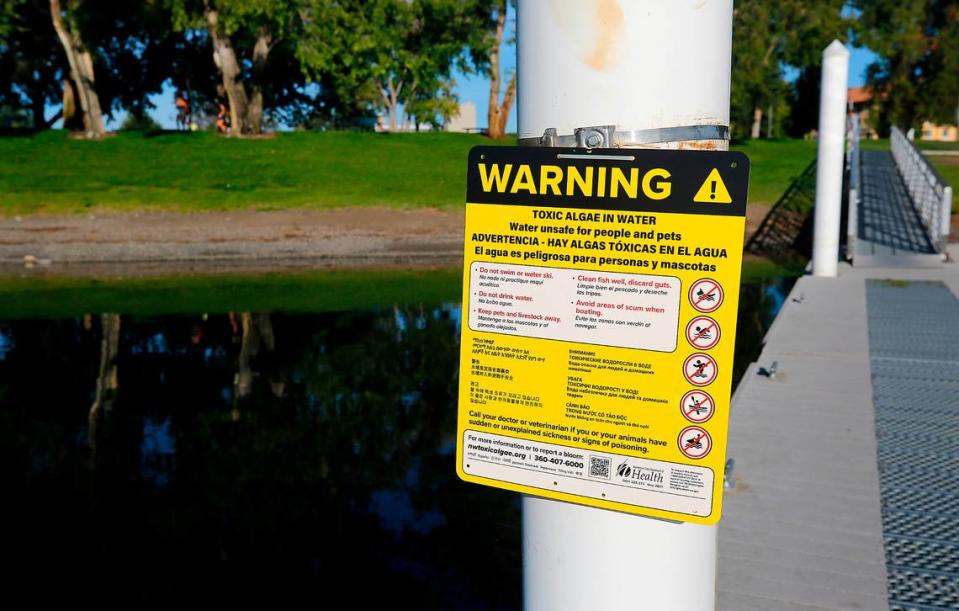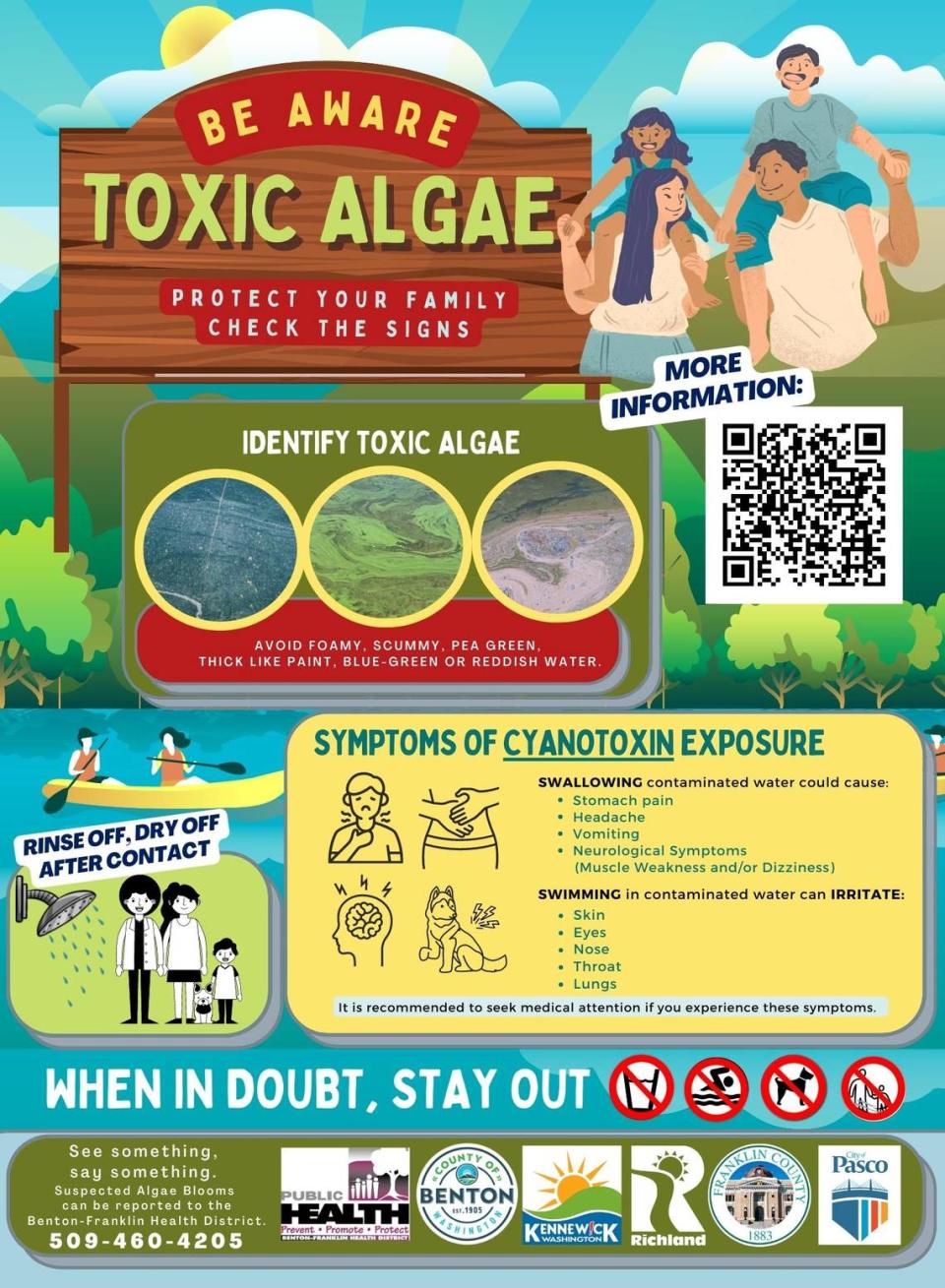Dangerous toxic algae warning in Tri-Cities expanded to 3 more spots on Columbia River
The Benton Franklin Health District is warning that toxic algae may be at levels unsafe for people and animals in three more spots along the Columbia River in the Tri-Cities.
The health district said on Tuesday that warning signs have been posted at Wade Park in Pasco and at Leslie Groves Park and Columbia Point in Richland, along with signs previously posted at the Howard Amon swim beach in Richland.
The Howard Amon swim beach has had high levels of toxic algae since mid August, but until this week that was the only place on the Columbia River in the Tri-Cities that currently was a concern.
Now preliminary test results indicate that water at Wade Park and Leslie Groves may have a type of cyanotoxin that harms the nervous system because of a toxic algae bloom, the district said in a social media post Tuesday evening.
Columbia Point also has been closed to water recreation until more testing can be done following a complaint to the health district.

What is commonly called toxic algae, or blue-green algae, is bacteria which have some of the characteristics of plants.
It is especially dangerous for small children and animals.
Two summers ago several dogs that had played in the Columbia River in Richland and just upstream died, and sampling of river water showed the same cyanobacteria as found this summer.
People and dogs are exposed to the toxin released by bacteria in the scum on the river water by ingesting the water or inhaling spray from the river. Dogs can ingest the toxin by licking their fur.
Symptoms of the toxin, which attacks the nervous system, can appear withing 15 to 20 minutes, depending on the size of the person or animal and the amount of toxins consumed.
Exposure in animals may result in weakness, staggering, difficulty breathing, convulsions and death.
In people, signs may include numbness of the lips, tingling in fingers and toes, and dizziness. They should seek medical attention, according to the health district.
People catching fish in areas with a major toxic algae bloom, should be aware that the neurotoxin may accumulate in the liver, kidneys and other organs of fish. They should remove the internal organs, which may contain more of the neurotoxin, and consider not eating the fish.
The Tri-Cities municipal governments have treatment processes to neutralize the toxin in drinking water.
Avoiding contaminated water
If you are looking for a place to play in the water, particularly in the summer or fall when toxic algae is most likely to be present, the health district recommends:
• Look for warning signs and for signs of toxic algae blooms in the water. It make look like green, blue, brown or reddish green paint floating on the water. When in doubt, stay out.
• After swimming or playing in the water, shower with soap and water.
• Report suspected toxic algae blooms online at the Washington State toxic algae tracking site at nwtoxicalgae.org or to the Benton Franklin Health District.


